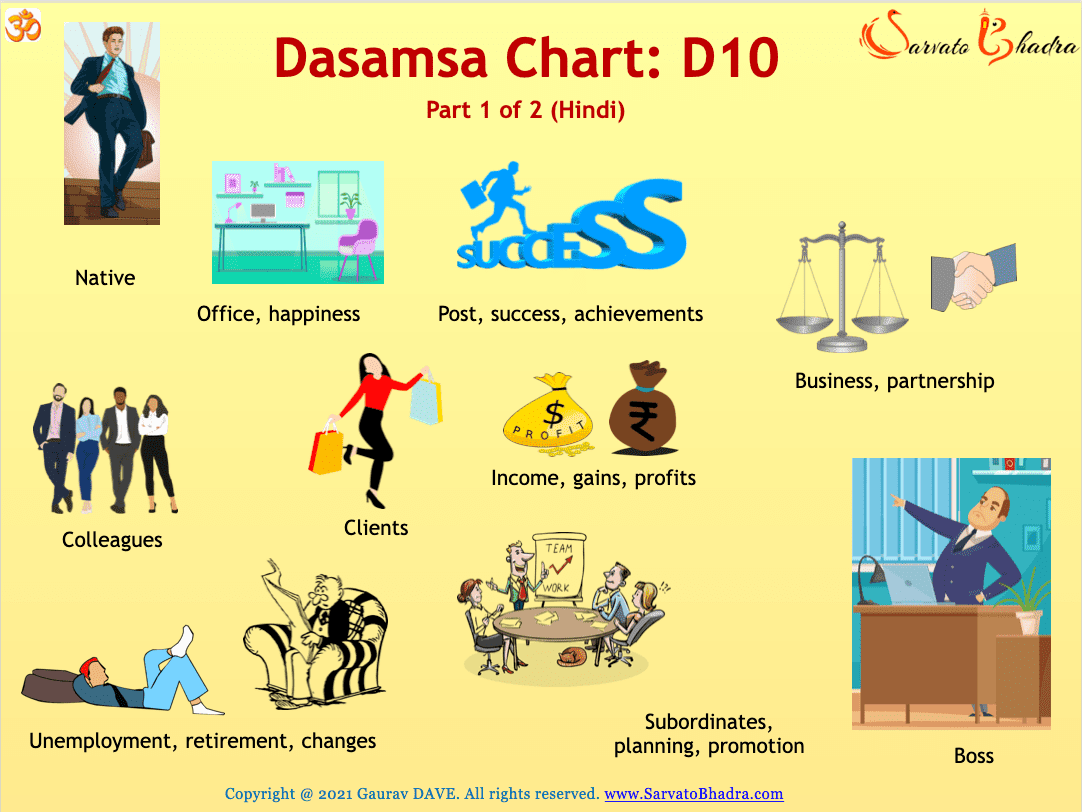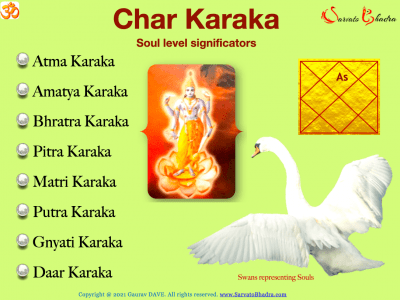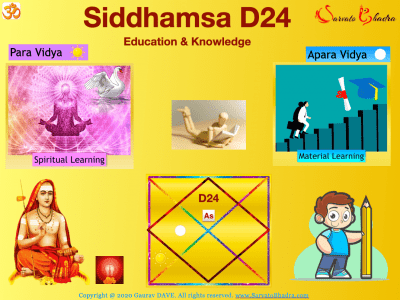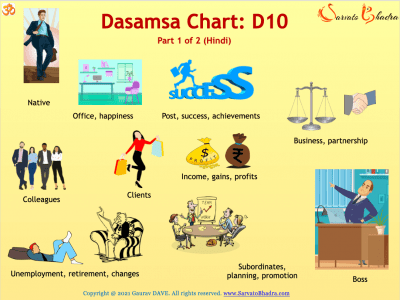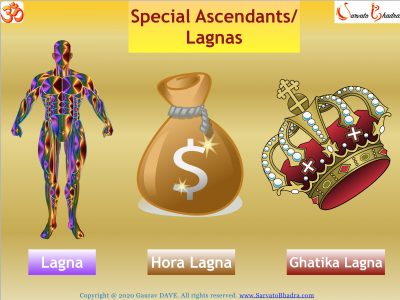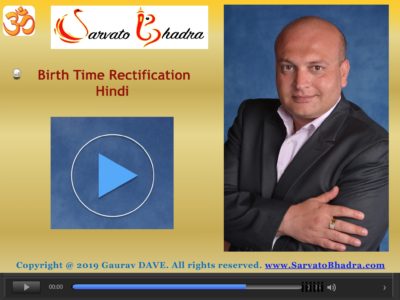₹2,366
- Understanding our Karmas and inner motivations.
- Concrete learning of the Dasamsa (D10) chart in a lucid manner to analyze the career & profession of a native.
- Case studies of Shri Amitabh Bachchan, Shri Dhirubhai Ambani, and Smt. Sonia Gandhi.
- 5 more case studies are included in Part 2 of the series.
- Language: Hindi (हिन्दी). Duration: 5h 55m
Description
Mastering the Dasamsa Chart D10: Guiding Karmas & Career
Discover the power of the Dasamsa Chart D10 in understanding your career, and profession in life. Gain a new perspective on your life path and your journey. Understand your Karmas and the inner motivations behind them by learning to read the Dashamsha or D10 chart. Learn how to calculate and interpret this important divisional chart of Vedic astrology in detail.
We use this D10 varga kundli to analyze the career & profession of a native. Learn from celebrity case studies of Shri Amitabh Bachchan, Shri Dhirubhai Ambani, and Smt. Sonia Gandhi.
Vedic Astrology Video Lesson on Dasamsa Chart D10 Contains:
1. What is the Dasamsa Chart D10? What do we see in this Divisional chart?
The Dasamsa Chart (D10) is a divisional chart in Vedic astrology used to analyze an individual’s career, profession, and achievements. It is derived from the main birth chart (D1) by dividing each sign into ten equal parts. This chart provides deeper insights into one’s professional life, reputation, and status.
2. What is the scope of this Dashamsha chart?
The scope of the Dasamsa Chart includes understanding an individual’s professional strengths, career trajectory, potential for success, and the nature of their work environment. It also helps in assessing leadership roles, public life, and contributions to society.
3. When does the Dasamsa Chart D10 get activated? Is it when we begin working formally or even before?
The Dasamsa Chart is generally considered active from birth. It is particularly significant from the time an individual begins their career, but it can also provide insights into the potential career paths and tendencies from an early age.
4. What happens after retirement? Is the role of Dasamsa D10 over?
After retirement, the Dasamsa Chart still holds relevance as it can reflect activities related to one’s professional legacy, post-retirement engagements, and contributions to society. It also indicates how one might continue to influence their professional field even after active working years.
5. How do we calculate the Dashamsha Chart?
The Dasamsa Chart is calculated by dividing each sign of the zodiac (30 degrees) into ten equal parts of 3 degrees each. These divisions are then assigned to different signs in a specific sequence. The resultant placements of planets in these divisions form the D10 chart.
6. The significance of 12 houses in the Dashamsha Chart.
1st House: Self, character in career
2nd House: Resources in profession, products, speech
3rd House: Communication, efforts in career, initiative
4th House: Comforts from profession, work environment, office
5th House: Power, management, planning, control, intelligence in the profession
6th House: Service, obstacles, challenges, competitors in career
7th House: Business, partnerships, professional relations
8th House: Sudden changes, transformations in career, failure, disappointments, research
9th House: Fortune, boss, mentor, duty
10th House: success, achievements
11th House: Gains, professional friends/networks, income
12th House: Losses, compromises, and expenditure in the profession
7. Categorization of 4 Ayan or goals of life hence four karmas: trikonas, trines, and triplicity. Dharma, Artha, Kama, and Moksha.
The four aims of life (Purusharthas) reflected in the Dasamsa Chart are:
Dharma (duty): Represented by the 1st, 5th, and 9th houses, focusing on righteousness and career duties.
Artha (wealth): Represented by the 2nd, 6th, and 10th houses, focusing on material success and career achievements.
Kama (desires): Represented by the 3rd, 7th, and 11th houses, focusing on professional desires and ambitions.
Moksha (liberation): Represented by the 4th, 8th, and 12th houses, focusing on spiritual fulfillment and retirement from active work.
8. Functional roles executed by a native in career/work/life via Dasamsa chart.
The Dasamsa Chart illustrates an individual’s different professional roles and responsibilities. This includes leadership positions and collaborative roles in work. Functional roles like management, technology, marketing, sales, accounting, human resources,
9. Work-related developments: changes, uncertainty, transfers, breaks, retirement, promotion, demotions, layoffs, fights, etc. The Dasamsa Chart can indicate various work-related developments and challenges such as job changes, transfers, breaks in career, promotions, demotions, layoffs, and conflicts at the workplace. Analyzing the D10 chart helps anticipate these events and understand their impact on one’s career.
10. What makes one opt for independent activity or organized business activity? Is it just money? Or a business activity while in job/employment (salary/remuneration). How do we judge all these using the Dasamsa Chart D10?
The decision to pursue independent activities or organized business ventures can be analyzed through the Dasamsa Chart by examining the strength and placement of key houses and planets. Factors like the desire to have one’s own business, the need for autonomy, financial incentives, and career aspirations are reflected in the D10 chart.
11. Ten Amsa rulers or dig-pals of Dasamsa Chart. They are guardians of ten directions, 8 in the horizontal plane and 2 in the vertical plane. They show the inner motives behind our karmas.
The ten Amsa rulers or dig-pals in the Dasamsa Chart are associated with the ten directions, each governing a specific area of professional life and reflecting the underlying motives behind one’s actions and decisions in their career. These include deities like Indra (East), Agni (Southeast), Yama (South), Nirrti (Southwest), Varuna (West), Vayu (Northwest), Kubera (North), and Ishana (Northeast), Brahma ( vertically down), and Ananta (vertically up).
12. Case studies of Celebrities used to explain the concepts of the D10 chart:
Shri Dhirubhai Ambani: Analyzing his D10 chart reveals insights into his entrepreneurial spirit, innovative approaches, and business acumen that led to his success.
Smt. Sonia Gandhi: Her D10 chart reflects her political career, leadership qualities, and the significant roles she played in public life.
Shri Amitabh Bachchan: His D10 chart showcases his journey in the entertainment industry, the challenges he faced, and his remarkable achievements and public recognition.
Read about Gaurav Dave, Vedic Astrologer and Jyotish Teacher.
You may also like…
-
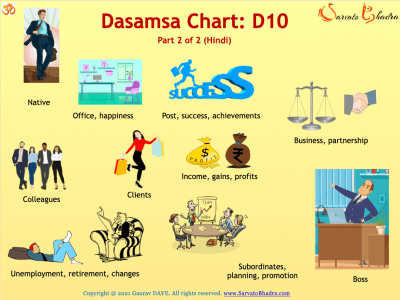
Dashamsha Chart (D10): Part 2 of 2 (Hindi)
₹1,911 Add to cart -
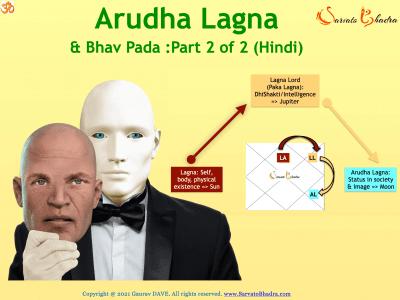
Arudha Lagna Predictions : Part 2 of 2
₹3,163 Add to cart -
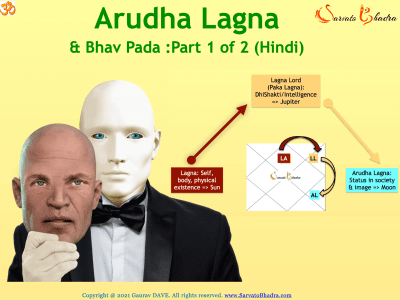
Arudha Lagna Predictions: Part 1 or 2
₹2,597 Add to cart -

Business segments represented by the 9 planets (Hindi)
₹303 Add to cart -
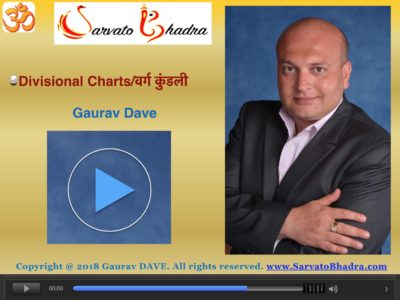
Divisional Charts/वर्ग कुंडली (Hindi)
₹2,297 Add to cart

